World Leaders React to Gaza Peace Plan, October 2025
October 9, 2025 Edited October 12, 2025, to add a comment from Pope Leo XIV. After negotiators meeting in Egypt reached agreement October 8, 2025, on the first phase of the 20-point U.S. plan to…
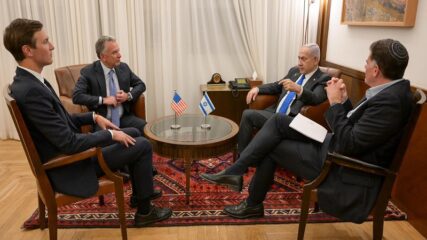
October 9, 2025 Edited October 12, 2025, to add a comment from Pope Leo XIV. After negotiators meeting in Egypt reached agreement October 8, 2025, on the first phase of the 20-point U.S. plan to…

In just under an hour, Herzog emphasized the special US-Israeli relationship, citing common values between the two democracies, noting, “when the US is strong, Israel is stronger. And when Israel is strong, the US is more secure.” He cited Israel’s domestic and foreign policy challenges in its 75th year.

President Herzog offers a compromise to the coalition’s proposed judicial overhaul in the forms of enacting a new Basic Law, and writing amendments to existing Basic Laws. Its detail suggests considerable behind the scenes discussion, and if only portions are enacted upon, this document could be seen in the future as a benchmark in Israel’s “constitutional” history.

Following up his for compromise on the matter of the massive proposed judicial reform overhaul, President Isaac Herzog, in the starkest of terms, said Israel was at the “abyss of a civil war,” as opponents and proponents headed toward a consequential showdown. He characterized the attempted overhaul as “wrong, oppressive, and undermines our democratic foundations.” He suggested a wide ranging consensus compromise plan for the sides to consider. Prime Minister Netanyahu rejected Herzog’s compromise plea.

In a rare address to the nation, Herzog called for deliberate compromise in the wake of the Netanyahu government’s proposed massive overhaul of the judicial system. It generated the largest public outpouring of opposition to a proposed policy, since the issue of German reparations to Israel was considered in 1951-52. Herzog sought to calm extraordinary high emotions.

In December President Herzog visited Manama, Bahrain, his fourth visit to a Middle Eastern country in 2022, (Abu Dhabi in January, Istanbul in March, Amman in June, and Sharm El-Sheikh in November), all aimed at bolstering Israel’s economic, cultural and bi-lateral relations with Arab states. Talks on this trip focused on expanding trade and sharing among others, Israel’s solar and desalinazation technologies.
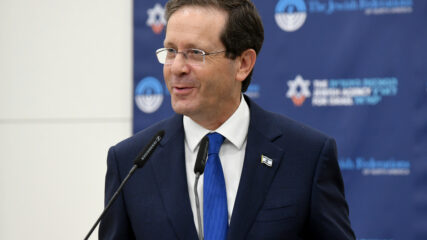
Herzog has served as the 11th president of Israel since July 2021. His father, Chaim Herzog, also served as president, and grandfather Yitzhak HaLevi Herzog was the chief rabbi of Ireland. A Tel Aviv native,…
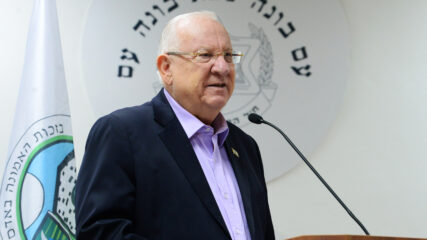
The 10th president of Israel from 2014 to 2021, Rivlin was a Likud politician who served as the speaker of the Knesset from 2003 to 2006 and 2009 to 2013. As president, he pushed for…
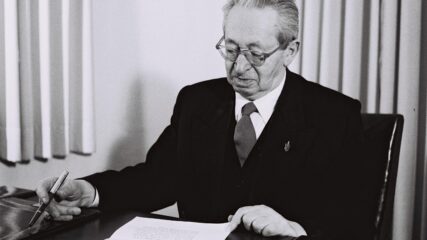
Before becoming Israel’s second and longest-serving president in 1952, Ukraine-born Ben-Zvi co-founded Yishuv self-defense groups Bar Giora and Hashomer. He became a Poalei Zion leader after immigrating to Palestine in 1907. He was prominent in…

A politician, lawyer, diplomat and writer who immigrated from Ireland to Israel in 1935, Herzog was Israel’s sixth president. He led IDF military intelligence after the War of Independence. When the U.N. General Assembly passed…
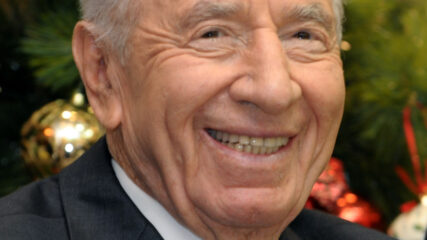
Peres is the only Israeli to serve as prime minister and president. Born in Belarus, he arrived in Palestine in 1934. He helped establish and arm the initial IDF in the 1940s and launched a…
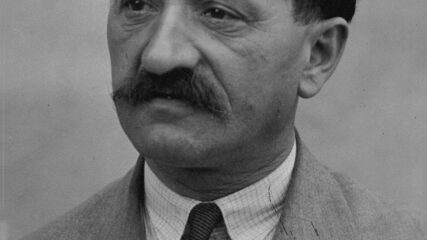
Originally from Moscow, Sprinzak was the first speaker of the Knesset, a position he held until his death. He was interim president after Chaim Weizmann died. After immigrating to Palestine during the Second Aliyah, Sprinzak…
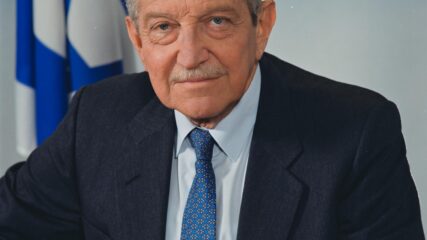
Weizman, the nephew of Chaim Weizmann, was Israel’s seventh president from 1993 to 2000. He was a founder of the Israeli Air Force and became its commander in 1958. As defense minister in the first…
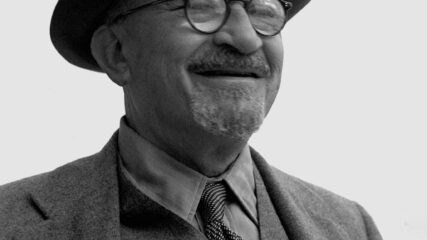
Weizmann, a native of Russian-controlled Poland, was the first president of Israel. In England during World War I, he used his chemistry skills to develop a synthetic process for making acetone and thus made relationships…

Herzog recognizes the gap between Israel and American Jews, proclaiming the critical and immediate need for education of each community of the other.

On June 2, 2021, Isaac Herzog was elected over Miriam Peretz to a seven-year term as Israel’s 11th president. When he takes office in July, succeeding Reuven Rivlin, he will become the first second-generation Israeli…
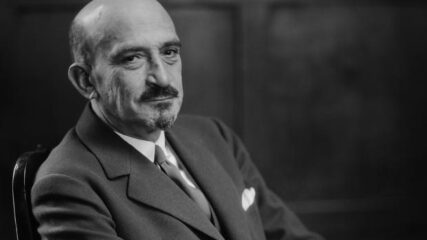
The present volume of the Letters and Papers of Chaim Weizmann begins with the Allied victory in Europe and ends in the investigation of the Palestine problem by the United Nations Special Committee. Within this period Weizmann was reduced from being the President of the Jewish Agency and the acknowledged leader of his people to a lonely figure, virtually retired from public life. This was because he continued to place his faith, at least until the summer of 1946, in cooperation with Great Britain, the Mandatory Power, while his principal colleagues in Zionism were adopting the ways of violence in Palestine.

The opening of this volume finds Chaim Weizmann in the United States, facing two urgent tasks: the rallying of American Jewry into a single, united front behind a Zionist platform; and the winning over of the Roosevelt Administration to the Zionist position. Following the breakdown of talks between Zionists and non-Zionists in the autumn of 1942, the Bnai Brith organization was asked by the Zionists to set up a preliminary meeting of American Jewish organizations that would prepare for a democratically-convened conference. This body would then appeal to the American Jewish community over the heads of its established leaders.

We have seen from the previous volume in this series how support for the partition of Palestine into independent Arab and Jewish states, with substantial portions retained under the Mandate, had waned in the British Cabinet during 1938. Chaim Weizmann had struggled throughout that year to keep the scheme alive, but to no avail. The Technical Commission under Sir John Woodhead, which had been in Palestine ostensibly to produce a detailed plan, pronounced the scheme unworkable in any form. Thus, as 1939 dawned, the Zionist leader faced the unwelcome prospect of a conference at which Arabs and Jews would meet with British representatives to seek a compromise solution to the problem based upon a unitary Palestine.

The two and a half years covered by this volume of the Letters and Papers of Chaim Weizmann introduce a period of unparalleled tragedy for the Jewish people, with, ironically, the Zionist movement in deep conflict with Great Britain, for most of the time the only Power actively engaged in the struggle against Jewry’s enemy, Adolf Hitler. Despite ever-increasing evidence of Nazi intentions towards the Jews, British immigration policy as regards Palestine remained tied to the rigidly-enforced limits set by the White Paper issued by the Chamberlain Government in May 1939.

As mirrored in this volume of his letters, the years 1937-38 were for Chaim Weizmann the most critical period of his political life since the weeks preceding the issuance of the Balfour Declaration in November 1917. We observe him at the age of 64 largely drained of physical strength, his diplomatic orientation of collaboration with Great Britain under attack, and his leadership challenged by a generation of younger, militant Zionists. In his own words he was ‘a lonely man standing at the end of a road, a via dolorosa. I have no more courage left to face anything—and so much is expected from me.’

Major changes had taken place in the structure of the Zionist Organization during the four years between the rejection of Chaim Weizmann at the Seventeenth Zionist Congress of 1931 and his reelection in 1935. The most important of these was the secession of the Revisionists, who established the New Zionist Organization in September 1935. The second was the strengthening of the Labour groups to become the central force in the movement, with 45 per cent of the delegates at the Nineteenth Congress compared with 29 per cent in 1931. Finally, there was the continued decline of the two wings of the General Zionists. These factors both necessitated and facilitated Weizmann’s return to the leadership.

It was the style of Weizmann’s leadership rather than his politics that came under fire at the 17th Zionist Congress held in Basle in July 1931. His policies, to be sure, were much criticized, but his displacement from the presidency of the World Zionist Organization and Jewish Agency at that Congress did not alter the basic strategy of the movement. Officially, Weizmann remained in the wilderness for the ensuing four years, until his re-election as President at the 19th Congress in Lucerne in August 1935. Nevertheless, he would not allow his political judgment to relax, nor would he abdicate from his role as a Jewish statesman of international rank. For January, 1933, saw the advent of Adolf Hitler to power.

Volume XV of the Letters of Chaim Weizmann opens with the Zionist leader in an ambiguous situation: although he has resigned the Presidency of the Zionist Organization and Jewish Agency in protest against the Passfield White Paper of October 1930, which restricted Jewish immigration into Palestine and the acquisition of land there, no successor has been selected. Weizmann in fact is still the head of the movement, and this situation continues until he finds himself formally replaced as President by Nahum Sokolow at the Seventeenth Zionist Congress the following year.